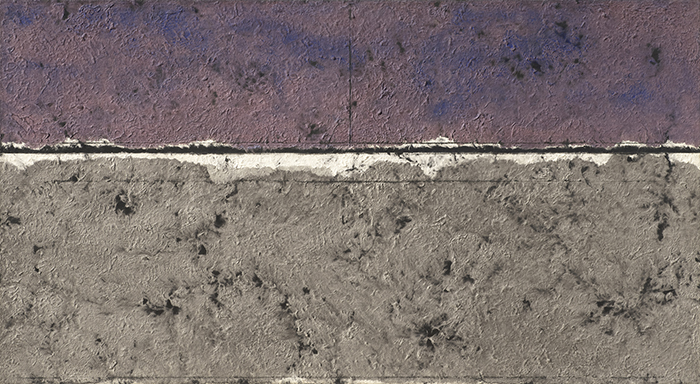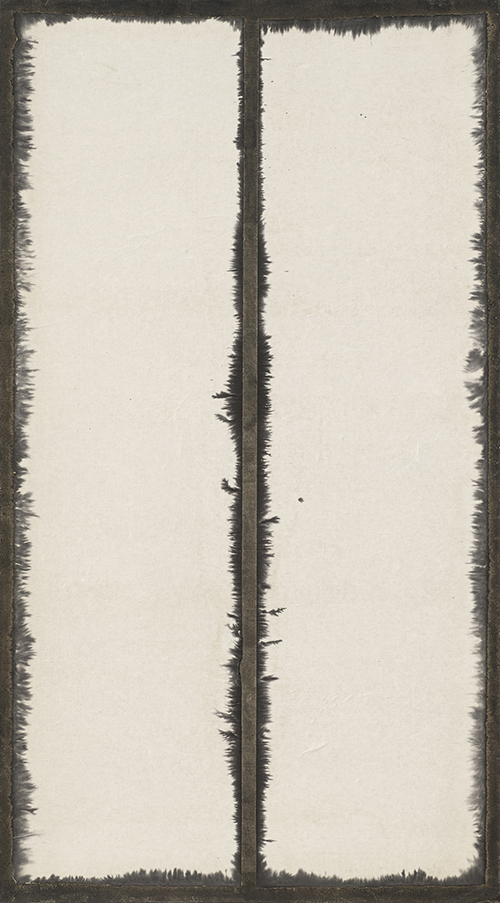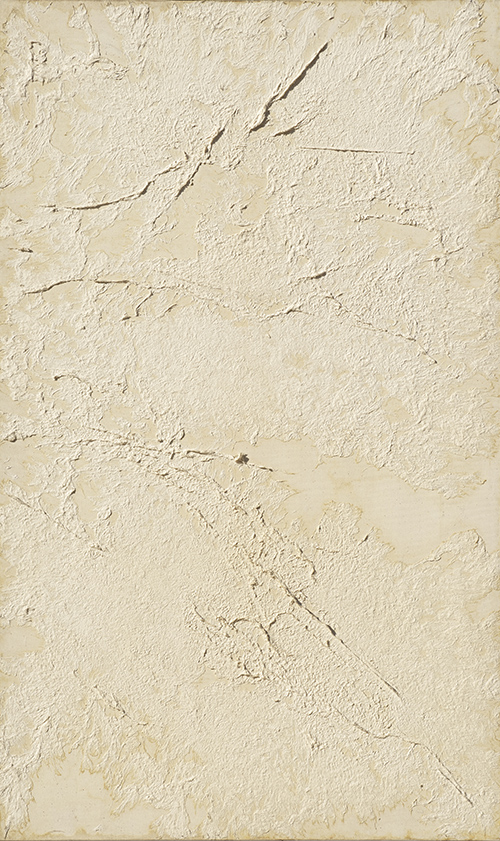
In 'Meditation 91108' (1991), Chung Chang-Sup uses dak, or paper pulp, dyed in various colors to create a painting with depth and texture.
"Unity between the thing and the self" (물아합일, 物我合一).
This was the artistic philosophy that defined the work of the late Chung Chang-Sup (1927-2011), an abstract artist known for creating paintings with dak, or traditional Korean mulberry paper pulp.
Chung Chang-Sup would often tell interviewers that when he first found dak paper, the medium immediately made sense to him, as though he had known it all along. After this serendipitous encounter with dak in the 1970s, the artist became absorbed in the attempt to unify the action of making art with the art itself. Through decades of experimentation, the artist cultivated his art in the congruent overlap between tradition and modern expression, and paved the path to his singular artistic vision.
At an exhibit currently underway at the Kukje Gallery until March 27, visitors are able to take a glimpse at Chung Chang-Sup's artistic journey. Some 30 works of art installed in the gallery's two sections show the development of the artist's vision, starting from early pieces in the 1950s and 1960s through to representative dak pieces made between the 1970s and the 1990s.

For 'Return 77-M' (1977), Chung Chang-Sup attached Hanji to the canvas and let the ink bleed naturally through the paper.
Chung Chang-Sup made his debut as an artist in 1953 after his work was selected for the Kukjeon, the Korean National Art Exhibition. Korean society was undergoing major changes at this time following the Korean War, and was adopting Western modernism without any of its ideological foundation. At first, Chung found himself influenced by the Art Informel movement and other Western art movements of the 1960s, but he later joined the abstract movement initiated by a younger generation of contemporary artists.
In the mid-1970s, Chung was introduced to traditional Hanji mulberry paper, a major turning point in his career. During this early period, the artist produced his "Return" series where he attached Hanji to the canvas and let the ink bleed naturally into the fabric of the paper. These works evoke changhoji, or window coverings, used in traditional Hanok architecture. The artist used Hanji because of this association, to connect his art to the traditions that he felt were being lost at the time.
Starting in the 1980s, Chung began to explore dak, the raw material of Hanji, in order to overcome the limitations of paper being just a background, resulting in his "Tak" series. In this body of work, the artist first soaked the dak, or pulp, in water and kneaded it into a paste before applying it to the canvas and sculpting it with his hands. Once dried, the work produced through this technique exposed various delicate lines that revealed the unique structure of the fibers in the paper.

In the 'Tak' series from the 1980s, Chung Chang-Sup applied dak directly to the canvas to expose the natural lines that form as the paper pulp dried in place.
In the 1990s, Chung delved into his "Meditation" series, a body of work consisting of orderly grids and deep colors. Pigments of burgundy, indigo blue and brown were applied to the wet dak to achieve a darker palette. The solid square surface of the grid is reminiscent of the partitions found in traditional Korean windows, an inspiration from an earlier period, while the smoother surface of the Hanji contrasts with the textures of the fibrous dak.
Through these works, Chung was able to create "a painting that Hanji paints by itself," thus achieving his desire for unity between the artistic process and the art itself. Toward the end of the 1990s, the artist simplified his works to a black and white monochrome palette. He continued producing pieces through 2010, until his death in 2011.
More information about the artist and the exhibition can be found at the Kukje Gallery's website.
https://www.kukjegallery.com
By Lee Hana
Korea.net Staff Writer
Photos: Kukje Gallery
hlee10@korea.kr